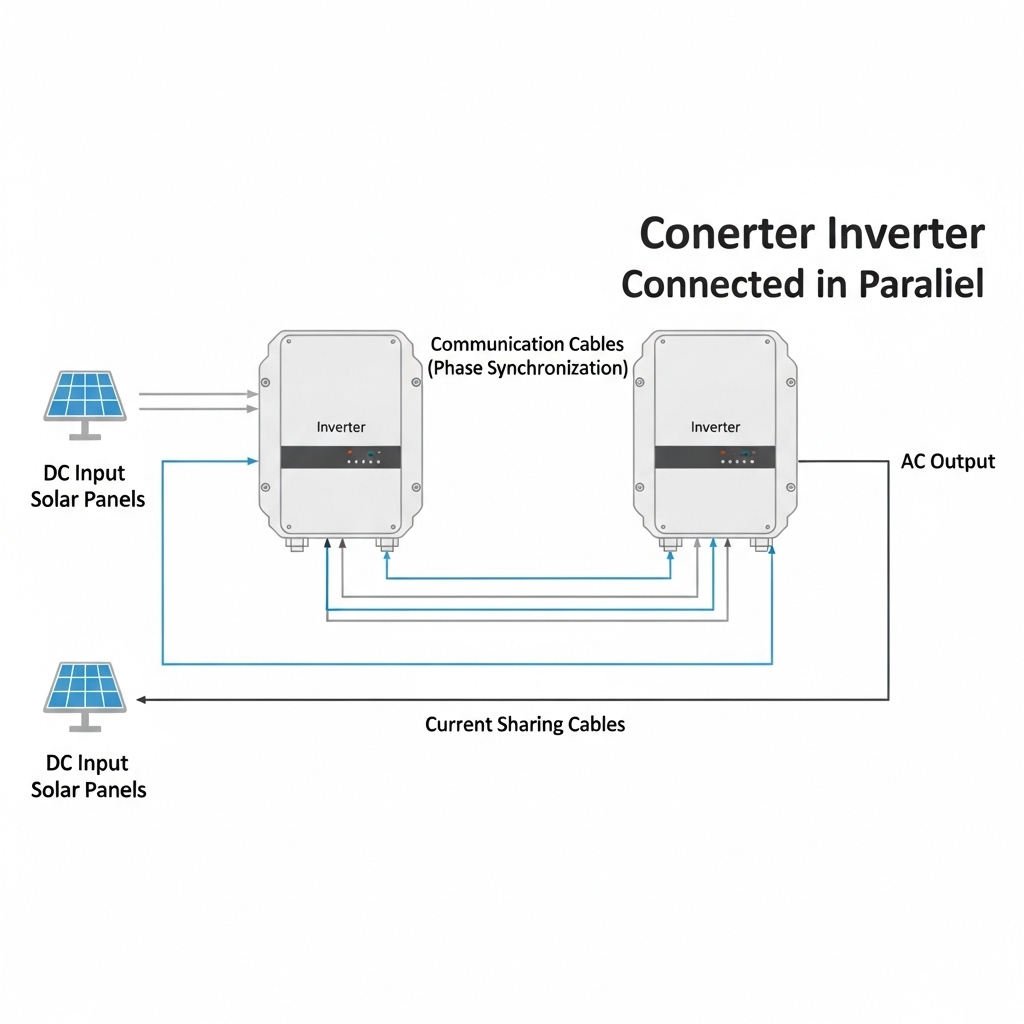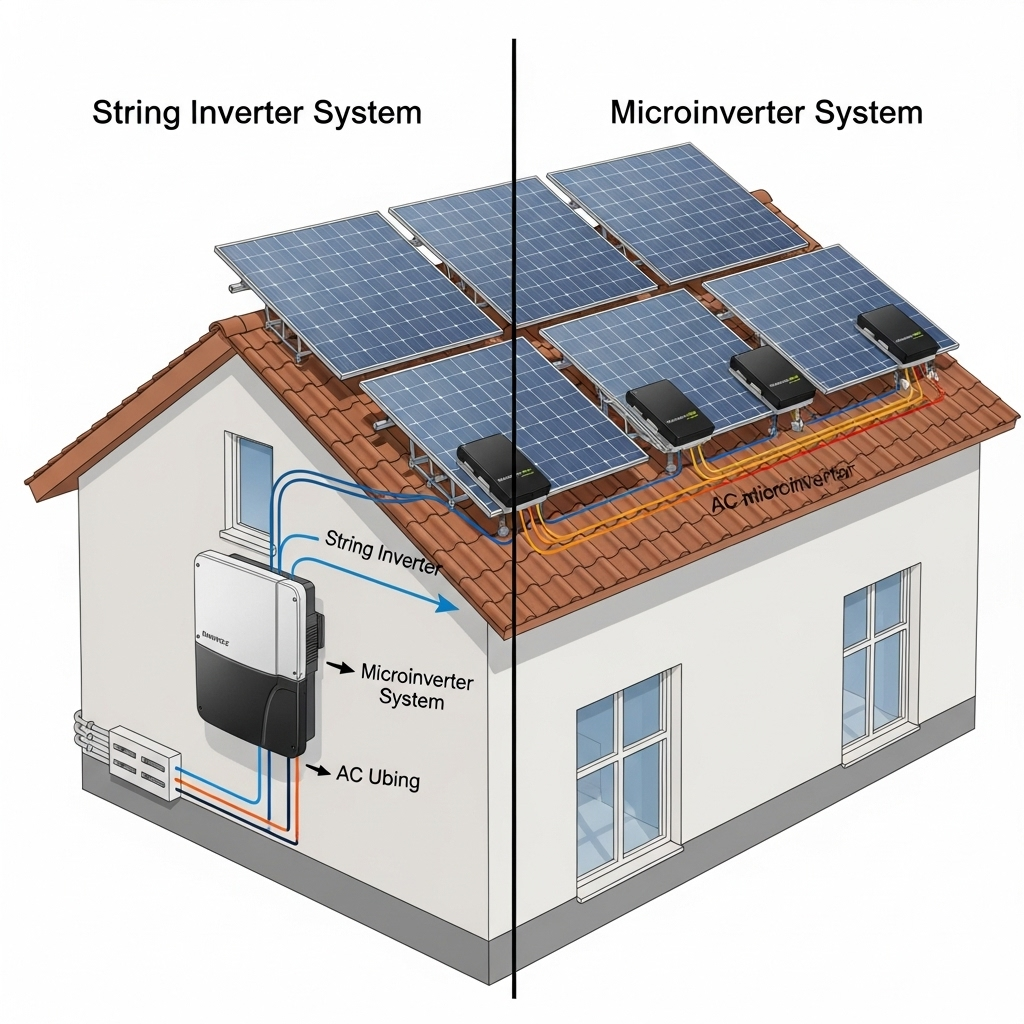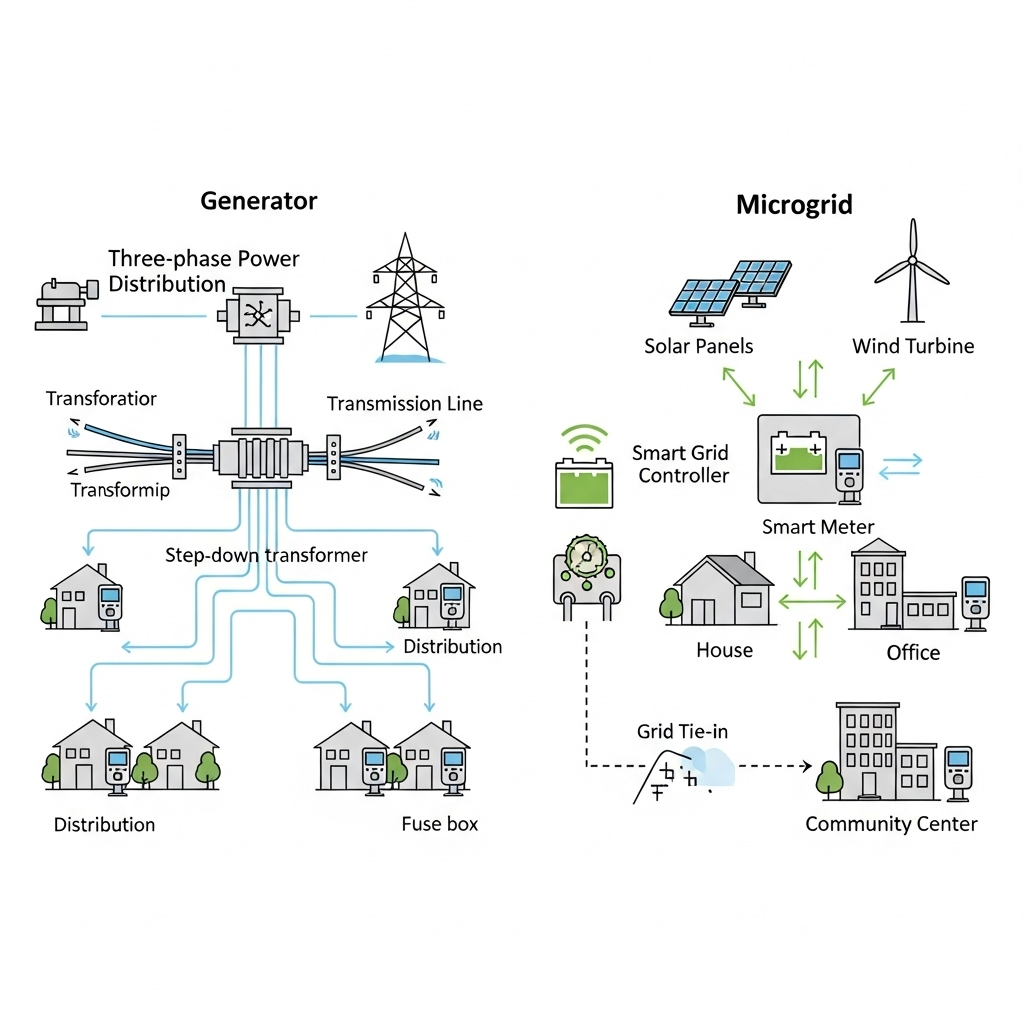Scaling up your power system by connecting multiple inverters in parallel unlocks greater capacity and redundancy. This configuration allows several units to work as a single, more powerful inverter. Success depends entirely on precise coordination, specifically phase synchronization and load sharing. Without it, the system risks instability and damage. This guide details the technical principles and practical steps for creating a robust parallel inverter system.
The Core Principles of Paralleling Inverters
Paralleling inverters is more than just connecting wires. It involves creating a cohesive system where each unit contributes equally and operates in perfect harmony. Understanding the foundational principles of phase synchronization and current sharing is critical for a safe and efficient setup.
What is Parallel Operation?
In a parallel configuration, the AC outputs of two or more inverters are connected to power the same loads. This setup effectively increases the total power capacity available. For example, connecting two 5kW inverters in parallel creates a single 10kW power source. This approach provides scalability, allowing you to expand your system's capacity as your energy needs grow, and adds redundancy, as the remaining units can often continue to power critical loads if one unit fails.
Why Phase Synchronization is Non-Negotiable
Phase synchronization is the process of perfectly aligning the AC sine wave outputs from all parallel inverters. Both the voltage and frequency of each inverter must match at every instant. If one inverter's sine wave is out of step with the others, it can create a massive voltage differential. This mismatch causes large, uncontrolled currents to flow between the inverters instead of to the loads. These 'circulating currents' can cause overheating, trip protective breakers, and ultimately damage the equipment. Modern inverters achieve synchronization through high-speed communication links, where one unit acts as a master, setting the phase and frequency for all other slave units to follow.
The Role of Current Sharing
Once synchronized, all inverters must share the load proportionally. If one 5kW inverter in a 10kW system takes on 7kW of a load while the other only takes 3kW, the first unit will be overloaded and likely shut down, potentially causing a system-wide failure. To prevent this, inverters use control mechanisms to balance the load. A key factor in achieving balanced current sharing is physical wiring. The power cables connecting each inverter to the common AC busbar must be identical in length and gauge to ensure equal impedance. Even small differences can create imbalances that disrupt load sharing.
Technical Requirements for a Stable Parallel System
Building a reliable parallel inverter system requires careful component selection and a clear understanding of the technology's capabilities. From inverter compatibility to the type of control system used, each element plays a vital role in overall performance and safety.
Inverter Compatibility and Selection
The single most important rule for parallel operation is to use identical inverters. This means the same manufacturer, the same model, and ideally, the same firmware version. Inverters from different manufacturers use proprietary control algorithms and communication protocols that are incompatible. Attempting to parallel dissimilar inverters is a significant safety risk that leads to unpredictable behavior, poor load sharing, and potential equipment failure. Always consult the manufacturer's documentation to confirm that a specific inverter model supports parallel operation.

Grid-Forming vs. Grid-Following Capabilities
Inverters can be categorized by how they interact with an electrical grid. Grid-following inverters require an existing grid signal to operate, while grid-forming (GFM) inverters can generate their own stable grid. In an off-grid parallel system, GFM capability is essential. As noted in a U.S. Department of Energy project, grid-forming inverters are powerful enough to restart a grid from a complete blackout, a process known as a blackstart. This ability to create a stable voltage and frequency reference is what allows a parallel off-grid system to function independently and reliably. The International Energy Agency (IEA) highlights that the controllability of inverter-based resources is a key advantage for modern power systems.
| Feature | Grid-Following Inverter (GFL) | Grid-Forming Inverter (GFM) |
|---|---|---|
| Primary Function | Injects current into an existing, stable grid. | Creates a stable voltage and frequency reference. |
| Off-Grid Operation | Cannot operate without a grid signal. | Can operate independently and create a microgrid. |
| Parallel Role | Can be used in grid-tied parallel systems. | Essential for off-grid parallel and blackstart operations. |
| System Resilience | Depends on the utility grid for stability. | Provides stability and enables energy independence. |
Integrating with Energy Storage
The battery bank is the heart of an off-grid solar system. In a parallel inverter setup, the battery must be sized to handle the combined charging and discharging currents of all inverters. An undersized battery can experience significant voltage sag under heavy loads, which can cause the inverters to trip. High-performance lithium iron phosphate (LiFePO4) batteries are well-suited for these applications due to their high C-ratings and stable voltage profiles. For a deeper analysis of how battery specifications impact system stability, you can review this comprehensive guide on solar storage performance.
Commissioning and Troubleshooting Your Parallel System
Proper setup and commissioning are crucial for long-term reliability. Once installed, a parallel system requires verification to ensure all components are communicating and sharing loads correctly. Knowing how to troubleshoot common issues can save significant time and prevent potential damage.
Verifying Phase Lock and Load Sharing
Before connecting the AC outputs of the inverters together, you must verify that they are synchronized. With the inverters powered on but their outputs disconnected from the load panel, use a voltmeter to measure the AC voltage between the Line terminal of Inverter 1 and the Line terminal of Inverter 2. A reading of zero or near-zero volts indicates that the sine waves are in phase. Any significant voltage reading suggests a synchronization problem that must be resolved before proceeding. After connecting the system, use a clamp meter to measure the current from each inverter under various load conditions to confirm they are sharing the load equally.
Common Issues and Solutions
Even with careful installation, problems can arise. Understanding the symptoms and causes of common issues is key to effective troubleshooting.
- Circulating Currents: If inverters are humming loudly or overheating at low loads, you may have circulating currents. This is often caused by poor synchronization or mismatched power cable lengths. Verify all communication and power wiring immediately.
- Uneven Load Sharing: If one inverter is consistently carrying more of the load, check that all power cables are identical in length and gauge. Also, confirm that all inverters are running the same firmware version and have the correct parallel settings configured.
- Communication Errors: Frequent alarms or an inverter dropping out of the parallel group often points to a communication issue. Check the communication cables for damage, ensure they are properly seated, and verify that any required terminating resistors are installed correctly. According to research from the International Renewable Energy Agency (IRENA), robust communication and control are fundamental to managing inverter-based resources effectively.
Disclaimer: This information is for educational purposes only. Electrical work is dangerous and should be performed by a qualified professional. Always follow manufacturer instructions and adhere to local electrical codes. This is not investment or legal advice.
Building a Resilient Energy Future
A correctly installed parallel inverter system offers exceptional scalability and reliability for achieving energy independence. The foundation of this powerful setup lies in the precise execution of phase synchronization and load sharing. By using compatible equipment, ensuring meticulous wiring, and understanding the role of grid-forming technology, you can build a robust power system capable of meeting high-demand energy needs. This advanced configuration is a cornerstone of modern microgrids and resilient energy solutions.
Frequently Asked Questions
Can I parallel inverters of different brands or power ratings?
This is strongly discouraged. Mismatched control algorithms, response times, and internal impedances can lead to severe load imbalances, circulating currents, and potential equipment damage. Always use identical models from the same manufacturer with matching firmware for stable and safe parallel inverter operation.
What is the difference between parallel stacking and split-phase stacking?
Parallel stacking combines multiple inverters to increase the total power output (wattage) on a single phase (e.g., 120V). Split-phase stacking connects two inverters to create a 120/240V service, which is necessary to run larger appliances like electric dryers or well pumps. While both involve connecting inverters, their purpose and wiring configurations are distinct.
How does phase synchronization work without a grid reference?
In an off-grid system, one inverter is designated as the 'master' or leader. It generates the primary AC sine wave, creating a stable voltage and frequency reference. The other 'slave' or follower inverters use high-speed communication links to lock onto this reference signal, ensuring their own output sine waves are perfectly aligned with the master's.
Do I need special cables for paralleling inverters?
Yes. In addition to heavy-gauge power cables that must be of identical length, you will need dedicated communication cables (often proprietary or standard protocols like CAN bus) to handle phase synchronization signals. Some systems also require separate current-sharing cables to ensure proper load distribution.





Leave a comment
All comments are moderated before being published.
This site is protected by hCaptcha and the hCaptcha Privacy Policy and Terms of Service apply.